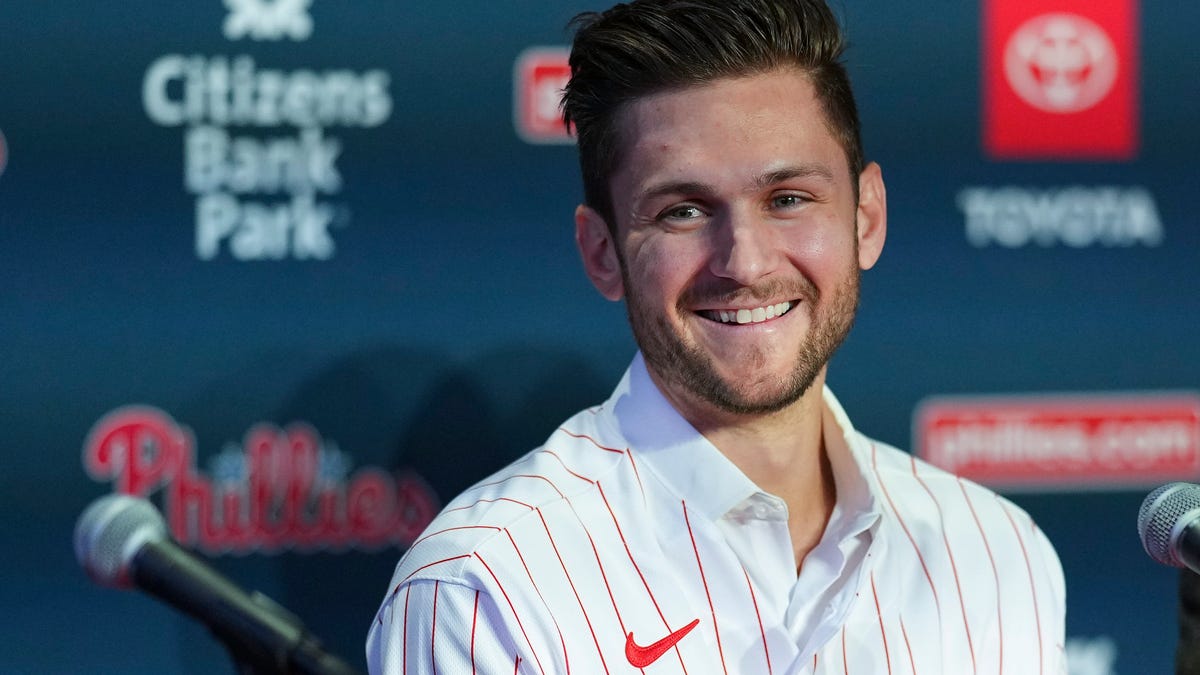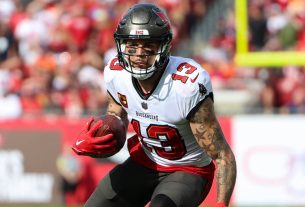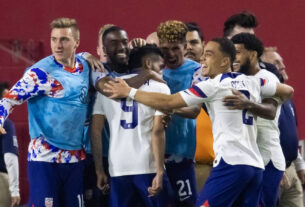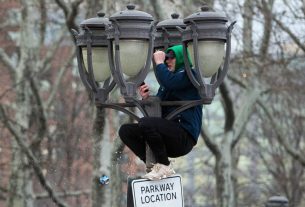
Two-time All-Star Trea Turner will be a Philadelphia Phillie for the next 11 years. He will be 30 in 2023, meaning the deal will end when Turner turns 40. This long-term contract with Turner near the end of his prime has some people worried. The two biggest concerns I’ve seen given to this situation are Turner’s sudden willingness to chase pitches outside of the strike zone and his speed.
The latter is obvious. Turner is a very fast player. According to BaseballSavant, Turner was the fifth-fastest player in MLB with an average sprint speed of 30.3 feet per second across 276 competitive runs. That’s very likely to decline with age. Given Turner’s reliance on his speed for stolen bases, the opportunity to take the extra base when teammates get hits, and the opportunity to stretch singles to doubles, doubles to triples, etc., it’d be easy to assume that should Turner lose his speed, he’d lose a lot of his value, but he might not lose as much speed as you might think. On average, a baseball player loses about one inch per second every year. Over the next eleven years, that would imply that Turner would go from 30.3 feet per second to 29.3, which would still rank him 35th in MLB in sprint speed.
I’m willing to admit that he’ll probably become much slower given that most players are losing one inch per year at 26 or 27 and Turner will be in his late-30s. That said, he probably won’t start losing speed until his mid-to-late 30’s, making the first half of this contract irrelevant when it comes to his speed. Also, lack of speed doesn’t remove Turner’s value as a baserunner. He’d still likely be a base-stealing threat, because of his incredible ability to read pitchers. Great speed doesn’t ensure someone gets a lot of stolen bases. If that were the case, Amed Rosario wouldn’t have been caught stealing a league-leading ten times in 2019. He also probably would’ve had more than 18 stolen bases in 2022. That ability to tell when a pitcher is going home and making that jump plays a big part of a player’s base-stealing prowess. Anyone who has watched Turner before can tell you he’s one of the best at it.
Turner’s willingness to chase pitches outside of the strike zone is the more troubling part of his game. As this video shows, player’s with a tendency to rely on outside contact for base hits tend to struggle later in their careers as their bat speed and reaction times slow down. Turner has never been somebody who chases balls out of the strike zone consistently, but in 2022, his outside zone swing percentage (O-Swing%) climbed from 30.7 percent in 2021 to 36.4 percent in 2022 — nearly four percent higher than his previous career-high: 32.6 percent in 2016. That’s a worrying figure, but it doesn’t guarantee that Turner will flame out.
For one, 2022 was a difficult year for hitters in general. The league-wide O-Swing percentage was approximately 32.7 percent, based on figures from FanGraphs. That’s a huge jump from where it was in 2021 and 2020 (approximately 30.9 percent and 31 percent respectively). While Turner’s increased chase rate may be disproportionate, it still coincides with the trend for 2022, which was an up year for pitchers. I’d expect that figure to fall back toward 30 percent in 2023, even if not all the way.
All that said, Turner is pretty reliant on being able to hit pitches outside the zone in order to provide value. In fact, according to BaseballSavant, Turner only provided value on pitches outside the strike zone. On pitches down the middle or near the zone, Turner provided -2 total runs of offense for the Los Angeles Dodgers. On pitches way out of the strike zone, he provided 26 total runs of offense. For comparison, Mike Trout provided 17 runs of total offense on pitches in, or near, the zone, while still providing 26 runs of offense on pitches way outside. Most of that value on pitches way out of the zone comes from taking pitches rather than swinging at them. That goes for both players, but as we just saw, Turner has increased his chase rate as of 2022.
Trout’s O-Swing rate has also increased recently, from 22.1 percent in 2021 to 26.3 percent in 2022. But as I said earlier, that can be attributed to the league trend that year. In general though, Trout’s O-Swing percentage didn’t take as big a jump as Turner’s, and isn’t nearly as high as Turner’s in the first place. He, much like Turner, took a massive hit in O-Contact rate the past few years, but his chase rate is still low enough to where it hasn’t hurt Trout too much offensively.
A poor chase rate isn’t guaranteed to derail a player’s career. The most infamous free-swinger in recent memory is Vladimir Guerrero. From 2007 until the end of his career in 2011, Guerrero never had an O-Swing percentage lower than 40. In 2004, that figure was a comparatively low 30.6 percent. Despite this insane increase in chase rate, and the fact that Guerrero was already 32 years old in 2007, Guerrero’s O-Contact percentage actually rose from 56.9 percent in 2002 to 65.5 percent in 2007 to 73.2 percent in 2011. The contact might not have been as solid, but just making contact more often counters the argument that Turner will undoubtedly regress when it comes to contact rate on pitches outside the zone. Plus, Turner’s speed and lack of reliance on the long ball compared to Guerrero might actually be a good thing if he ends up walking the same path as Guerrero.
Guerrero posted an OPS-plus over 100 in four of his final five seasons and an OPS-plus over 110 in three of those. Even though he’d gotten older, he’d maintained high level offensive production. The same could still happen to Turner. On the other hand, perhaps comparing Turner to a Hall of Fame slugger like Guerrero is unfair.
There’s also the chance that Phillies hitting coach Kevin Long can help Turner stop chasing pitches. Long became Philadelphia’s hitting coach this year, but prior to Philly, he’d served as the hitting coach in Washington (2018-21 with Turner) and with both New York teams (Yankees: 2007-14; Mets: 2015-17). Since 2007, Long’s offenses have only ever finished outside the Top 10 in O-Swing percentage (as in they chased the fewest pitches) three times — 2013, 2017, and COVID-shortened 2020. While Long’s Phillies did finish 26th in chase rate in 2022, his career marks in this category would suggest a turnaround is in the near future, which would help Turner drastically.
Even if Turner winds up declining rapidly after just three years of his contract, this deal could still be very much worth it for Philadelphia. After reaching the World Series in 2021, the Phillies are in win-now mode. They don’t care how much they spend or how much it costs them in the long run, the Phillies are looking to hang a championship banner in the very near future. Turner, until proven otherwise, is a valuable addition to an already championship-caliber roster at their least valuable position from 2021. If they win one championship, the rest of his contract will be worth it, no matter what. One championship is worth ten years of demise. Luckily for the Phillies it’ll likely be far fewer, if any at all.



